L’idea del film è nata guardando alla Certosa di Capri i quadri di Karl Diefenbach e poi “si è creato un immediato cortocircuito temporale con Joseph Beuys”. Quali sono state in particolare le “affinità” che vi hanno colpito?
Non si tratta di affinità dirette. È stata piuttosto un’intuizione di Mario Martone poi confermata dalla bibliografia di lingua tedesca sull’argomento. Penso in particolare agli studi di Harald Szeemann, ma anche al bel catalogo della mostra Künstler und Propheten che si è tenuta a Francoforte nella primavera del 2015, lì, in una prospettiva di “storia segreta dell’arte moderna dal 1872 al 1972”, erano presenti entrambi gli artisti. L’intuizione però è a monte di queste letture, nasce da un’emozione. In una mattina freddissima di dicembre, Mario era a un convegno organizzato da Pascal Vicedomini per Capri Hollywood e aggirandosi nelle sale bellissime della Certosa si era imbattuto nei grandi quadri del Museo Diefenbach. Non li conosceva ed era rimasto profondamente impressionato. La potenza di quelle grandi tele lo aveva colpito e sopra tutti il dipinto intitolato Non uccidere, un’opera in cui il Padreterno (che ha la faccia del pittore…) rivolge imperioso il suo comando a un uomo perché non uccida un cervo. Il quinto comandamento è in quel dipinto riferito per la prima volta, credo, non a un uomo ma a un’animale, una sorta di primo manifesto animalista e vegetariano. A quel punto la curiosità in lui era scatenata e da lì siamo partiti, abbiamo iniziato a leggere, a studiare, a vedere, approfondire, e così sono venuti fuori altri aspetti della personalità dell’artista, da quello più legato a un atteggiamento che potremmo definire ‘profetico’, alla militanza vegetariana e ambientalista, all’amore per Capri, il luogo in cui la realizzazione dell’utopia è possibile. A quel punto il pensiero è corso a Joseph Beuys, grande artista tedesco amatissimo da Mario e molto significativo nel suo percorso di formazione come nel mio. Il lavoro di Beuys confluisce di continuo in un’idea politica che ha al suo centro l’uomo e le sue potenzialità creative, la sua energia rivoluzionaria nel rapporto con le emozioni primarie così come con i materiali naturali come il ferro, il grasso, la cera d’api, il sangue. Per Beuys ogni essere umano è un artista e l’arte è l’unica forza veramente rivoluzionaria. Ci sembrava interessante immaginare il nostro protagonista così, costruirlo a partire da queste istanze artistiche e politiche e poi metterlo alla guida della comune.
Come si è arrivati alla scelta del titolo?
In principio il titolo del film era Capri-Batterie, come quello dell’opera che Beuys realizzò a Capri nel 1985 e di cui Lucio Amelio aveva donato a Mario un multiplo con la dedica: “A Mario, batteria vivente, con amore Joseph e Lucio”. Era un titolo tedesco però, incomprensibile per chi non conoscesse quell’opera di Beuys anche perché le parole prendono senso in rapporto all’immagine, secondo una modalità che era stata tipica dell’arte concettuale: il limone innestato sulla lampadina gialla vive nel rapporto con il linguaggio che è il veicolo di trasmissione di quell’idea. Per noi, senza l’immagine, la trasmissione era bloccata.
Serviva qualcosa di più immediatamente riconoscibile, decifrabile, qualcosa che raccontasse esplicitamente del film, e così, sempre con Beuys come stella polare, abbiamo pensato che La rivoluzione siamo Noi, realizzata a Villa Orlandi nel 1971, raccontava anche il nostro Seybu; da lì siamo arrivati a Capri-Revolution.
Il titolo è la perfetta sintesi del film, direi che ne è l’essenza stessa. Raccontami delle “rivoluzioni” di cui parlate.
Le rivoluzioni di cui si parla nel film sono almeno tre. Da una parte c’è la comunità di ribelli guidata dal Maestro, Seybu, un uomo forte come un albero radicato nelle rocce di Capri, con le sue certezze, la potenza delle sue idee, la sua utopia rivoluzionaria e solitaria. Dall’altra parte c’è Carlo, il giovane dottore socialista che crede nel progresso, nella materia e nella scienza, il suo pensiero si nutre degli ideali rivoluzionari che Maksim Gor’kij aveva portato sull’isola al principio del Novecento fondando una scuola di partito volta a formare giovani operai russi e intellettuali in esilio alla rivoluzione. Dall’altra ancora c’è Lucia, una capraia analfabeta, giovane e ribelle, che insegue il suo personalissimo sogno di libertà, di emancipazione, di definizione di sé, costretta com’è all’interno di un sistema patriarcale che non dà scampo neanche ai suoi fratelli, ineluttabilmente inchiodati al loro ruolo di ‘maschi’.
Seybu e il medico sono degli idealisti con due idee di mondo molto differenti ma complementari tra loro. Nella discussione tra i due, ognuno esprime le proprie opinioni e ascolta le ragioni dell’altro. Pur non condividendole, ognuno ne esce arricchito e si apre alla possibilità di un pensiero “altro” dal suo. C’è un riferimento al lavoro di Beuys?
Sì c’è un riferimento esplicito al lavoro di Beuys e in particolare ai pensieri sull’energia, sul calore e sulla materia che sono alla base della sua sperimentazione artistica e sono raccolti da Volker Harlan in una conversazione sul tema Was ist Kunst? (Cos’è l’arte?). Ci piaceva mostrare attraverso il rapporto tra queste due diverse utopie, quella socialista e post-Risorgimentale di Carlo e quella naturista, vegetariana e pacifista immaginata da Seybu, la possibilità di un confronto, di un conflitto che non genera però guerra, violenza e miseria umana, ma che offre nuove possibilità di sguardo e di pensiero.
Il lavoro di Beuys vi ha guidato per tutto il film (Capri-Batterie, La rivoluzione siamo Noi, Difesa della Natura, Creatività=Capitale, Terremoto in Palazzo). Come si costruisce questa relazione tra pensiero artistico e racconto cinematografico?
Questa è una domanda difficile a cui non so rispondere perché appartiene specificamente al lavoro del regista. Credo che Capri-Revolution sia il frutto di un dialogo tra artisti e opere che attraversa il tempo e accoglie in sé le esperienze di cui Martone si è nutrito.
Ci sono Diefenbach e Beuys da una parte, e dall’altra c’è Mario con le avanguardie artistiche degli anni Settanta e dei primi anni Ottanta, con la danza contemporanea, le performance, il teatro.
Secondo il pensiero di Hermann Nitsch, durante le sue performance, gli istinti primordiali dell’uomo, repressi dalle convenzioni sociali, riemergono in modo catartico, liberatorio. Infatti lui sostiene che il suo lavoro ha molto a che fare con la psicanalisi e con l’inconscio. Nella scelta del terapeuta tedesco della comunità di liberare la ragazza dalle sue “inquietudini” con il rito del sacrificio del cervo, c’è un riferimento estetico al suo lavoro?
Sì, sicuramente le performance di Nitsch hanno avuto un ruolo nell’orientare la costruzione per immagini di un rito primitivo e cruento come quello del sacrificio del cervo. Il terapeuta tedesco, invece, è ispirato alla figura storica di Otto Gross, un giovane geniale psichiatra che in prima battuta è folgorato dal pensiero di Freud, ma che poi se ne discosta per seguire strade alternative, estreme, che lo porteranno alla follia e alla reclusione in manicomio.
Diefenbach dipinge la natura selvaggia dell’isola, scenari cupi e suggestivi, incorporee figure femminili che si tengono per mano come in una danza. La fotografia del film rimanda alla sua pittura. A quali quadri in particolare vi siete ispirati?
La luce dei suoi dipinti in generale è stata una linea guida per la fotografia del film.
Tra i quadri che abbiamo guardato di più e con i quali è possibile suggerire delle analogie, mi viene in mente La grotta azzurra di Capri, la Grotta della Minerva, il fregio Per Aspera ad Astra che correva lungo l’intero perimetro della sua casa.
Nella sceneggiatura che abbiamo pubblicato con La Nave di Teseo ci sono alcune immagini di Diefenbach messe a confronto con immagini del film.
Quando Seybu spreme il limone nelle mani di Lucia e Lucia incomincia a “volare”, è uno dei momenti più belli e poetici del film. Che nesso c’è con Capri-Batterie?
Ecco questo è l’esempio perfetto di quello che provavo a dire prima. Quel momento è proprio l’esemplificazione del dialogo a distanza tra due artisti, perché la vitalità e la forza propulsiva delle opere d’arte non conosce i limiti dello spazio e del tempo.
Dal rapporto di Mario con Capri-Batterie nasce un’emozione, poi una riflessione, e poi nascono delle immagini, ed è la scena del film.
Il percorso di emancipazione intrapreso da Lucia è un esempio forte di presa di coscienza della propria individualità e dell’affermazione della propria libertà. Quanto c’è stato di tuo (in quanto pensiero femminile della coppia) nella costruzione di questo personaggio?
Lucia nasce dalla discussione tra me e Mario e sicuramente deve qualcosa anche alla mia sensibilità sul tema della condizione delle donne, ma deve molto anche a una grandissima scrittrice e a uno dei personaggi femminili più belli del Novecento italiano che secondo me è Modesta de L’arte della gioia di Goliarda Sapienza.
Per noi la sua vitalità ferina, la sua libertà e la sua spregiudicatezza sono state un riferimento importante.
Lucia è un personaggio che sento molto profondamente, lei cerca e prende quello di cui ha bisogno con una furia che è propria della giovinezza e dell’intelligenza, segue la sua strada ed è pronta a pagarne il prezzo, anche quando è altissimo.
Fuori dalla più tradizionale dinamica di relazione tra madre sacrificale e figlia accudente e devota, Lucia ha con sua madre un rapporto particolarissimo che si svela solo nel finale, quando si capisce che proprio lei che l’ha abbandonata, con quel gesto le ha fatto il dono più grande che poteva farle: lasciarle intravedere lo spiraglio di una vita diversa che può esistere e che, se anche non è stata possibile per lei e per le donne della sua generazione, sarà possibile per sua figlia e per tutte quelle donne che verranno dopo di lei e che avranno la forza di battersi per la propria libertà.
Con il suo comportamento ribelle, con le sue fughe notturne, Lucia offre alla madre la possibilità di una presa di coscienza sul suo destino di donna e di moglie, le dà l’opportunità di desiderare con lei e per lei una vita diversa.
Laban concepiva la danza “come forma primaria e privilegiata dell’espressione umana; per lui comprendere il movimento significava comprendere se stessi”. La danza ci accompagna per tutto il film. Che significato le avete voluto dare?
La danza ha un ruolo importantissimo nel film perché riguarda il rapporto col corpo che è alla base delle idealità su cui si fonda la comune: la nudità, i bagni di sole, la ricerca di una purezza arcaica e primitiva, sono ancora possibili per loro proprio grazie al recupero di un rapporto senza filtro con il corpo nella sua naturalità.
Per le coreografie Mario si è rivolto a una grande coreografa come Raffaella Giordano che è riuscita a trovare un decisivo punto di equilibrio tra storia e contemporaneità nell’ideazione dei movimenti e delle danze.
Quando Karl mostra i disegni del padiglione per la danza che si deve costruire, Seybu ritiene che sia troppo alto, che domini il paesaggio, e fa un riferimento al tempio greco come esempio di perfetto equilibrio tra architettura e natura. È una critica ai valori di oggi dove la “Bellezza” viene sacrificata in nome della funzionalità e del “pensiero” economico?
Le parole sulla bellezza e sull’equilibrio che c’è e deve esserci tra l’ulivo e il tempio greco sono proprio di Beuys.
Nei nostri personaggi c’è la volontà di cercare un possibile rapporto di scambio con la natura al di là delle consuete dinamiche di sfruttamento economico.
Il film ci induce a riflettere sulla contemporaneità e sembra suggerirci, attraverso le visioni “utopiche” dell’arte, le modalità per la costruzione di una società più giusta e per la difesa della natura. È così?
Mi piacerebbe. Il film non indica una strada possibile, ma più strade e diverse.
Suggerisce che il conflitto, gestito con intelligenza e curiosità per l’altro, può generare vitalità e forza propulsiva. Mostra che cercare la libertà e battersi per averla ha un prezzo, ma è la scelta più vitale.
Quanto a me, in misura maggiore o minore, parte di quelle utopie mi appartiene.
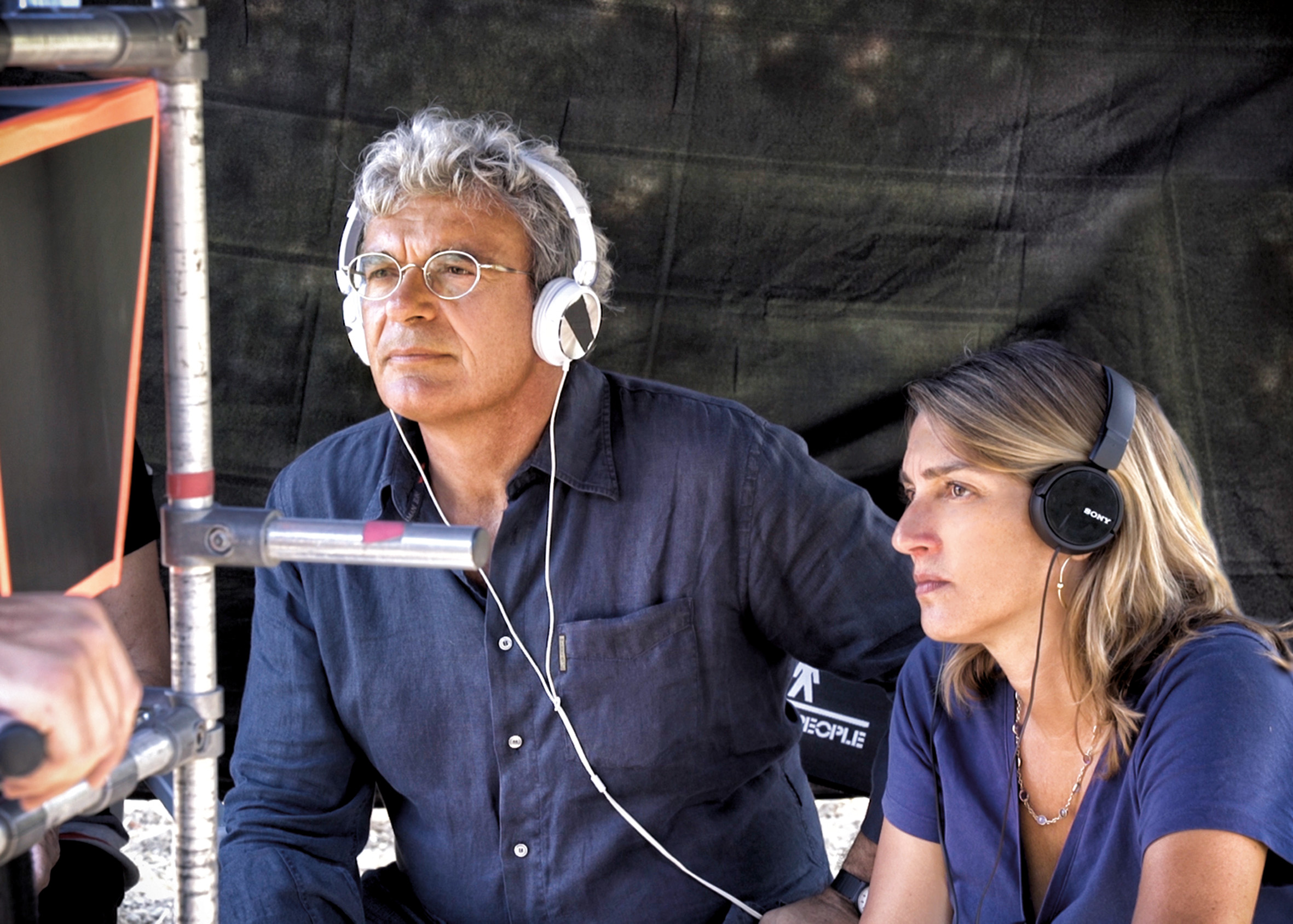
CAPRI-REVOLUTION: INTERVIEW TO IPPOLITA DI MAJO
The idea for the movie came after admiring Karl Diefenbach’s paintings at the Certosa of Capri and then “an instant temporal short-circuit with Joseph Beuys was created”. What were the “affinities” that hit you, in particular?
We are not talking about direct affinities. It was more like an intuition by Mario Martone, later confirmed by the German-language bibliography on the subject. I’m talking about Harald Szeemann’s studies, but also the fine catalog of the Künstler und Propheten exhibition, held during spring 2015, there, under a “secret history of modern art from 1872 to 1972” perspective, both artists were present. However, intuition is at the basis of these interpretations, it was born from an emotion. In a chilly December morning, Mario was attending a meeting organized by Pascal Vicedomini for Capri Hollywood, and wandering the beautiful halls of the Certosa, he bumped into the beautiful paintings of the Diefenbach Museum. He didn’t know them, and he was deeply impressed. The power of those big canvases moved him, above all the painting named Non uccidere, a work where God Almighty (whose face is the painter’s…) directs, imperious, his command to a man so that he doesn’t kill a deer. In that painting, for the first time, the fifth commandment does not concern a man, but an animal, a sort of first animalist and vegetarian manifesto. At that point his curiosity had been sparked and we started from there, we started reading, studying, observing, examining, and so we discovered new sides of the artist’s personality, from a, let’s say, “prophetic” attitude towards the vegetarian and environmental activism, to the love for Capri, the place where realizing a utopia is possible. At that point, we thought about Joseph Beuys, German artist loved by Mario and important figure for his formation, as for mine. Beuys’ works flow into a political idea that is centered on man and his creative potential, his revolutionary energy in the relationship with primary emotions and natural materials such as iron, fat, beeswax, blood. According to Beuys, every human being is an artist and art is the only true revolutionary force. We found it interesting to imagine our protagonist under this light, creating him from this political and artistic statements and then putting him in charge of the community.
How did you choose the title?
Initially, the movie was titled Capri-Batterie, like the 1985 piece realized by Beuys in Capri, and whose copy Mario received as a gift from Lucio Amelio, with this dedication: “To Mario, living battery, with love Joseph and Lucio”. However, it was a German title, incomprehensible if you didn’t know that work of art, especially because words acquire their meaning in connection with the image, following a typical modality of conceptual art: the lemon introduced inside the yellow bulb lives inside the relationship with language that is the vehicle transmitting the idea. For us, without image, this transmission was cut short. We needed something more easily recognizable, decipherable, something that told explicitly about the movie, and so, still guided by Beuys, we thought that La rivoluzione siamo Noi, realized in Villa Orlandi in 1971, was also describing our Seybu: from there we made it to Capri-Revolution.
The title is the perfect summary of the movie, its very essence, we could say. Tell me about the “revolutions” you mention.
There are at least three revolutions mentioned in the movie. On the one hand, there is the rebel community guided by the master, Seybu, a man as strong as a tree deeply-rooted in Capri’s rocks, with his certainties, the power of his ideas, his solitary and revolutionary utopia. On the other hand, there is Carlo, the young socialist physician who believes in progress, in matter and science, his philosophy feeds on the revolutionary ideals that Maksim Gor’kij brought to the island at the beginning of the twentieth century, when he founded a party school with the intent of educating young Russian workers and exiled intellectuals towards the revolution. There’s also Lucia, an illiterate goat herder, young and rebel, who follows her personal dream of freedom, emancipation, self-definition, trapped inside a patriarchal system from which not even her brothers are saved, inescapably stuck in their role of “males”.
Seybu and the physician are two idealists, with very different yet complementary ideas of the world. In their confrontation, each one expresses his opinions and listens to the other’s reasons. Even though they don’t share their motives, they are enriched by them, and the possibility for an “other” philosophy is opened. Are there any references to Beuys’ work?
Indeed, there is a clear reference to Beuys’s work and his thoughts on energy, heat and matter, at the basis of his artistic experimentations. They have been collected by Volker Harlan in a conversation on the subject Was ist Kunst? (What is art?). We liked to show through the relationship between these two different utopias, the socialistic and post-unification utopia imagined by Carlo and the naturist, vegetarian and pacifistic utopia imagined by Seybu, the possibility for a discussion, a conflict that however does not produce war, violence and human misery, but instead offers news possibilities of views and thoughts.
Beuys’ work guided you during the entire movie (Capri-Battery, We are the revolution, Defense of Nature, Creativity=Capital, Earthquake in a Building). How did you build this relationship between artistic thought and cinematographic narrative?
This is a difficult question I can’t answer, as it concerns specifically the director’s work. I think that Capri-Revolution is the result of dialogue between artists and works that overcomes time and embraces the experiences lived by Martone. There are Diefenbach and Beuys on one side, and on the other there is Mario with his artistic avant-gardes, taken straight from the 1970s and the early 1980s, with contemporary dance, performance, theater.
According to Hermann Nitsch’s thinking, during his performances, man’s primordial instincts, repressed by social conventions, re-emerge in a liberating, cathartic way. In fact, he believes that his work was deeply connected to psychoanalysis and the subconscious. In the elements of the German therapist, of the community who frees the girl from her “fears” through the rite of the deer sacrifice, is there an esthetic reference to his work?
Yes, surely, Nitsch’s performances helped creating the images of a primitive and bloody ritual such as the sacrifice of the deer. The German therapist, instead, is inspired by the historical figure of Otto Gross, a young, brilliant psychiatrist who was at first mesmerized by Freud’s thinking, but later discarded it to follow alternative, extreme paths, who would lead him to madness and to imprisonment in a mental hospital.
Diefenbach paints the wild nature of the island, suggestive and dramatic landscapes, ethereal female figures holding hands, like in a dance. The movie’s photography references his paintings. Which paintings were a source of inspiration, in particular?
The light in his paintings were a guideline for the movie’s photography. Among the paintings we observed the most and that could suggest us some analogies, I can think about La grotta azzurra di Capri, La Grotta della Minerva, the frieze Per Aspera Ad Astra that ran along the entire perimeter of his home. In the script we published with La Nave di Teseo, there is a comparison between some of Diefenbach’s images and scenes taken from the movie.
When Seybu squeezes the lemon in Lucia’s hands and she begins to “fly”, that is one of the movie’s most beautiful and poetic moments. Is there a connection with Capri-Batterie?
Yes, this is the perfect example of what I was trying to say earlier. That moment really is the simplification of the long-distance dialogue between two artists, as the vitality and the propulsive strength of a work of art doesn’t know the limits of space and time. From Mario’s relationship with Capri-Batterie an emotion is born, then a reflection, and then images come out, and that’s the movie’s scene.
The journey for emancipation undertaken by Lucia is a strong example of the awareness of one’s own individuality and the affirmation of personal freedom. How much of yourself (as the female side of the artistic duo) did you put in the creation of this character?
Lucia is born from the discussion between myself and Mario and surely she owes something to my own sensibility about the status of women, but she owes a lot also to a great writer and one of the most beautiful female characters of the Italian twentieth century, that is, Modesta, from L’arte della gioia, by Goliarda Sapienza. For us, her wild energy, her freedom and her irreverence were an important reference point. Lucia is a character I’m very connected to, she searches and takes what she needs with the signature fury of youth and intelligence, she follows her own path and she’s ready to pay the price, even when it’s very high. Beyond the more traditional dynamic between sacrificial mother and caring and devoted daughter, Lucia lives a very unusual relationship with her mother. This is only revealed at the end, when she realizes that it was precisely her mother, the person she had abandoned who was given her the greatest gift she could have ever received: to make her see the possibility of a new life, a life that was out of reach for her and other women of her generation, but that will be possible for her daughter and all the women that will come after her and have the strength to fight for their freedom. With her rebellious attitude, her nocturnal escapades, Lucia offers her mother the possibility of awareness on her destiny as woman and wife, she gives her the possibility to long for a different life with her and for her.
Laban imagined dancing “as the primary and privileged form of human expression: for him, understanding movement meant understanding yourself”. Dancing accompanies us during the entire movie. What meaning did you want to give it?
Dancing has a very important role in the movie, because it concerns the relationship with the body, which is the core of the ideals on which the community is based: nudity, sunbaths, the search for an archaic and primitive purity, are still possible for them thanks to reclamation of an unfiltered relationship with the body, in its natural state. For the choreographies, Mario addressed to a famous choreographer such as Raffaella Giordano, who managed to find a decisive point of balance between history and contemporaneity in the movement and dances.
When Karl shows the sketches for the dance pavilion that is to be built, Seybu thinks it is too tall, that it covers the landscape, and he refers to the Greek temple as example of perfect balance between architecture and nature.
Is this a critic to today’s values where “Beauty” is sacrificed to functionality and “economic philosophy”?
The words on beauty and on the balance that there is and must be between the olive tree and the Greek temple are actually Beuys’.
In our characters there’s the will to find a possible exchange with nature beyond the usual dynamics of economic exploitation.
The movie inspires us to think about contemporaneity, and it seems to suggest us, through the “utopic” visions of art, the modality for the construction of a fairer society and the safeguard of nature. Is that correct?
I’d like that. The movie does not show a single possible path, but rather more and different roads.
It suggests that the conflict, if managed with intelligence and curiosity toward the other, can generate vitality and propulsive strength.
It shows that searching for freedom, and fighting for it, has a price, but that it is the most vital choice. As for me, to a greater or lesser extent, part of those utopias belongs to me.


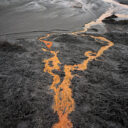


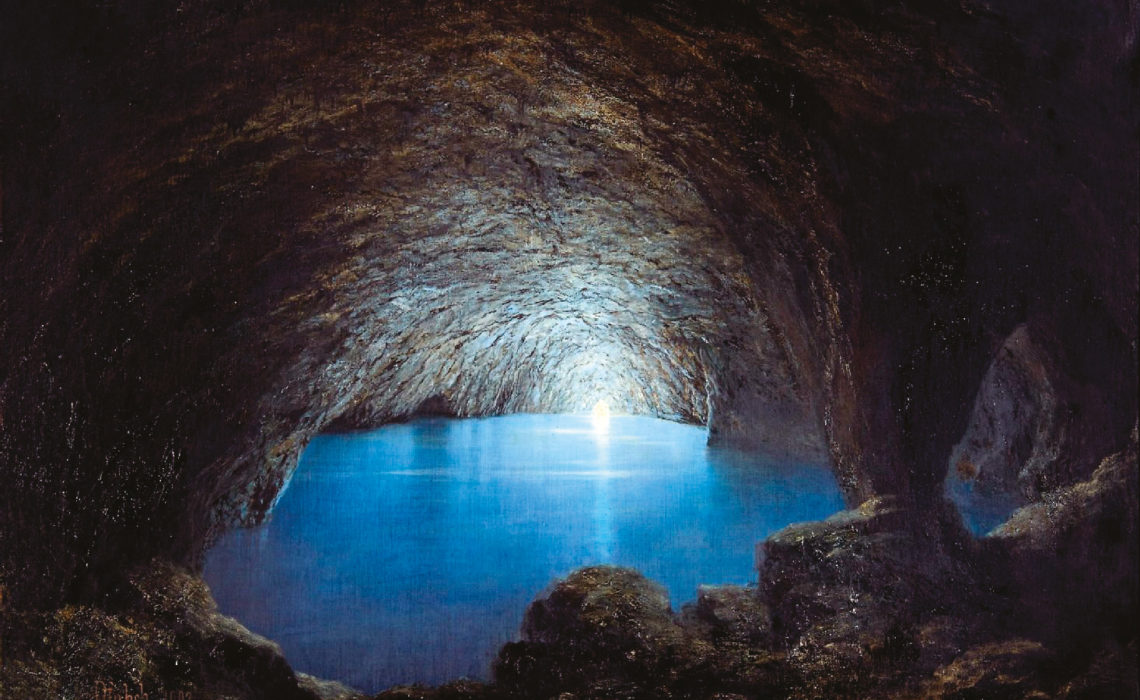
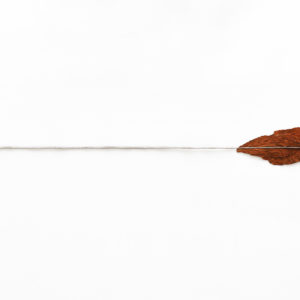
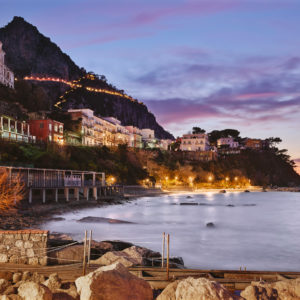
No Comments